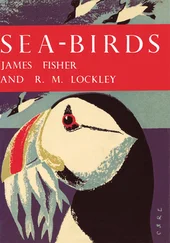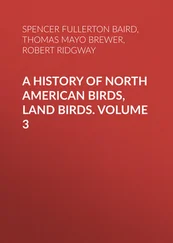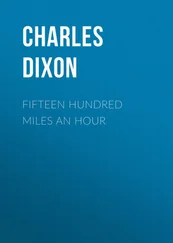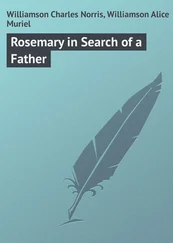Charles Dixon - British Sea Birds
Здесь есть возможность читать онлайн «Charles Dixon - British Sea Birds» — ознакомительный отрывок электронной книги совершенно бесплатно, а после прочтения отрывка купить полную версию. В некоторых случаях можно слушать аудио, скачать через торрент в формате fb2 и присутствует краткое содержание. Жанр: foreign_antique, foreign_prose, на английском языке. Описание произведения, (предисловие) а так же отзывы посетителей доступны на портале библиотеки ЛибКат.
- Название:British Sea Birds
- Автор:
- Жанр:
- Год:неизвестен
- ISBN:нет данных
- Рейтинг книги:3 / 5. Голосов: 1
-
Избранное:Добавить в избранное
- Отзывы:
-
Ваша оценка:
- 60
- 1
- 2
- 3
- 4
- 5
British Sea Birds: краткое содержание, описание и аннотация
Предлагаем к чтению аннотацию, описание, краткое содержание или предисловие (зависит от того, что написал сам автор книги «British Sea Birds»). Если вы не нашли необходимую информацию о книге — напишите в комментариях, мы постараемся отыскать её.
British Sea Birds — читать онлайн ознакомительный отрывок
Ниже представлен текст книги, разбитый по страницам. Система сохранения места последней прочитанной страницы, позволяет с удобством читать онлайн бесплатно книгу «British Sea Birds», без необходимости каждый раз заново искать на чём Вы остановились. Поставьте закладку, и сможете в любой момент перейти на страницу, на которой закончили чтение.
Интервал:
Закладка:
The Lesser Tern begins breeding in June. Like all the other species it returns unfailingly to certain spots along the coast each summer, and may, therefore, be presumed to pair for life. Its favourite breeding-grounds are extensive stretches of sand, varied with slips and banks of coarser shingle. It makes no nest, not even so much as scratching a hollow for its eggs, but lays them on the bare ground. It is most interesting to remark that this Tern never lays its eggs on the fine sand, but always on the bits of rough beach – where the ground is strewn with little stones, broken shells, and other débris of the shore – where their colour harmonises so closely with surrounding objects that discovery is difficult. The eggs are from two to four in number – I have on two separate occasions taken clutches of the latter – but three may be given as the average. They vary from buff to grayish-brown in colour, blotched and spotted with various shades of darker brown and gray. During the hottest hours of the day the female sits but little upon them, and it is remarkable how quickly these shore birds will rise from their nests at the first sign of impending danger – the alarm doubtless being given by the male bird from the air above. It is a most exceptional thing to see a conspicuously coloured bird rise from its nest in a bare situation; the eggs are generally coloured protectively, and resemble the objects around them; the presence of the showily attired parent would inevitably lead to their discovery. Early in autumn, when the young are strong upon the wing, the return journey to the winter home on the African coast begins, and it is during these migration journeys that the bird is, perhaps, most commonly observed along the British seaboard.
Allusion may here, perhaps, be permitted to the Sterna nigra or Hydrochelidon nigra of ornithologists. The Black Tern formerly bred commonly in our marshes and fens, but has long ceased to do so. The “Car Swallow,” as it used to be widely called in the fens, belongs to the group known as Marsh Terns – birds that rarely frequent the sea coast at all, so that its absence from our avi-fauna, although greatly to be deplored, could scarcely be remarked by the observer of marine species alone. The White-winged Black Tern and the Whiskered Tern complete this division, known as “Marsh Terns.” Both these latter are occasional wanderers to the British Islands.
CHAPTER II.
PLOVERS AND SANDPIPERS
In the present chapter we commence the study of an entirely different class of birds. The Gulls are for the most part seen flying in the air or swimming upon the sea, but the Plovers and the Sandpipers spend the greater part of their time on the ground. Again, Gulls, when adult, are remarkably showy birds, but the Plovers and allied species are just as inconspicuous. Many of the haunts frequented by Gulls are utterly unsuited to the Plovers and Sandpipers. These principally delight in low sandy coasts, mud-flats, slob-lands, and salt marshes. Rocks and ranges of cliff have no attraction for these little feathered runners of the shore; they obtain their food on the shallow margin of the sea, on the sand and shingle, the mud and the ooze, or at low water among the weed-draped stones. They are emphatically beach birds. Such parts of the coast that have little or no beach uncovered at high water, on which they may rest whilst the tide is turning, or at low water on which they can seek for food, are but little frequented by these Limicoline birds. Consequently we find them much more abundant on the flat eastern coasts of England, and some parts of the southern coasts, with their miles of sand and mud and wide estuaries, than on the much more rock-bound north and west.
The Plovers, with their allied forms, the Sandpipers and Snipes, and between which no very pronounced distinction is known to exist, constitute a well-defined group of birds, perhaps on the one hand most closely allied to the Gulls, and on the other hand to the Bustards. There are more than two hundred species in this group, distributed over most parts of the world. The Limicolæ (under which term we include the Plovers, Sandpipers, and their allies) present considerable diversity in the colour of their plumage, and in a great many species this colour varies to an astonishing degree with the season. The most brilliant hues are assumed just prior to the breeding season; the winter plumage is much less conspicuous. To a great extent this colour is protective, the brighter plumage of summer in many species harmonising with the inland haunts the birds then frequent: the duller hues characteristic of winter assimilating with the barer ground – the sands and mud-flats. It is worthy of remark that the species which do not present this great diversity in their seasonable change of plumage – such as the Snipes and Woodcocks – confine themselves to haunts clothed with vegetation all the year round; or – as in the case of the Ringed Plovers – to bare sands and shingles. In their moulting the Limicolæ are most interesting. It is impossible to enter very fully into the details of this function in the present volume, nor is it necessary, for the purpose of this study of marine bird-life, to do so. A few of the most salient facts, however, may be mentioned. The young of all Limicoline birds are hatched covered with down, and are able to run soon after their breaking from the shell. They consequently spend little time in the nest, after they are hatched. This down varies considerably not only in the pattern of the colour, but in the colour itself. Some of these chicks, or young in down, are beautifully striped or spotted; others are sprinkled or dusted with darker or lighter tints than the general colour. In all, however, the colours are eminently protective ones, and harmonise so closely with the hues of surrounding objects that discovery is difficult; more especially so as the chicks possess the habit of crouching motionless to the ground when menaced by danger. The first plumage of the young bird in the present order, approaches more or less closely in colour that of the summer plumage of the adult. At the beginning of autumn, however, these bright colours begin to be changed for a dress which resembles the winter plumage of their parents. This is not effected, however, by a moult, but by a change in colour of the feathers, only the very worn and abraded ones being actually replaced. In the spring following, these immature birds moult into summer plumage, similar to that of the adults, although the wing coverts retain their hue, characteristic of summer or the breeding season, until the next autumn, when for the first time these feathers are changed for the gray or brown ones of winter. It should here be remarked that the wing coverts of the adults seem only to be moulted in the autumn, so that this portion of their plumage is always the same colour after the bird reaches the adult stage of its existence. The phenomenon of the alteration of colour in the plumage of birds, and especially in Limicoline species, without moulting or an absolute change of the feathers, is a profoundly interesting one. One of the most remarkable facts in connection with this phenomenon is the restoration of the worn and ragged margins of the feathers in some Limicoline species to a perfect condition without a change or moult of the notched and damaged feather. Schlegel was the first naturalist, apparently, to discover that this wonderful renovation took place, but his statements seem to have been doubted by naturalists. Fortunately Schlegel’s opinions have been fully confirmed by Herr Gätke; and the reader interested in the subject is referred to that great naturalist’s remarks thereon in his book on the birds of Heligoland. 1 1 Heligoland as an Ornithological Observatory , p. 151, et seq.
This seasonal change of colour may be produced both by a moult and by actual transition, without cast of feather, even in the same bird: the restoration of ragged feathers and development of colour upon them may also be progressing at the same time. Thus the black markings on the head and neck of the Golden Plover are the result of colour alteration, but the black on the breast is attained by moult. The colour changes in the Sanderling, the Knot, the Dunlin, the Redshank, and numerous other allied birds, are perfectly astonishing: in the Redshank especially so, the profusely barred upper plumage being developed without change of feather, and the feathers reacquiring a pristine freshness and perfectness which seem almost incredible without a complete moult!
Интервал:
Закладка:
Похожие книги на «British Sea Birds»
Представляем Вашему вниманию похожие книги на «British Sea Birds» списком для выбора. Мы отобрали схожую по названию и смыслу литературу в надежде предоставить читателям больше вариантов отыскать новые, интересные, ещё непрочитанные произведения.
Обсуждение, отзывы о книге «British Sea Birds» и просто собственные мнения читателей. Оставьте ваши комментарии, напишите, что Вы думаете о произведении, его смысле или главных героях. Укажите что конкретно понравилось, а что нет, и почему Вы так считаете.












